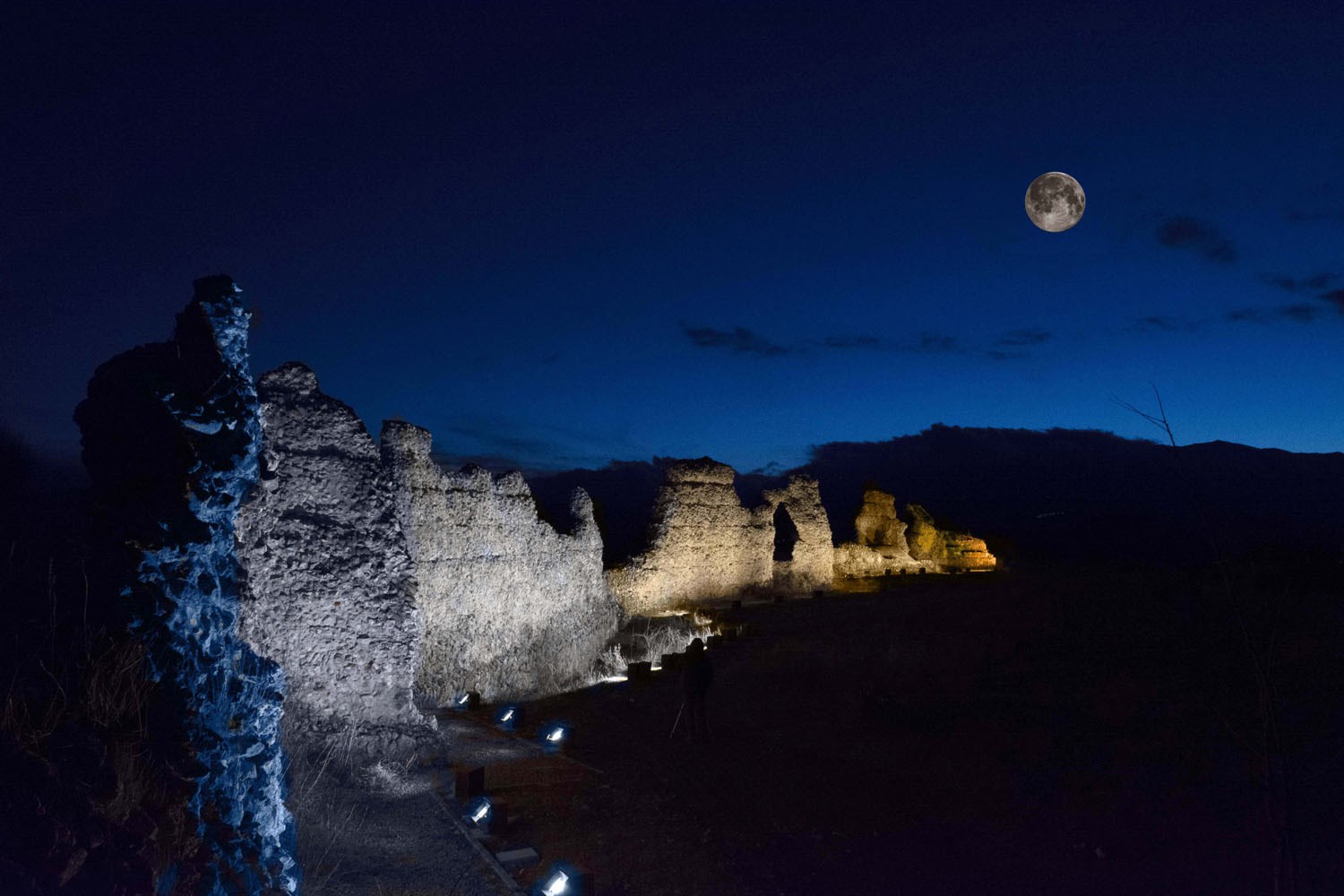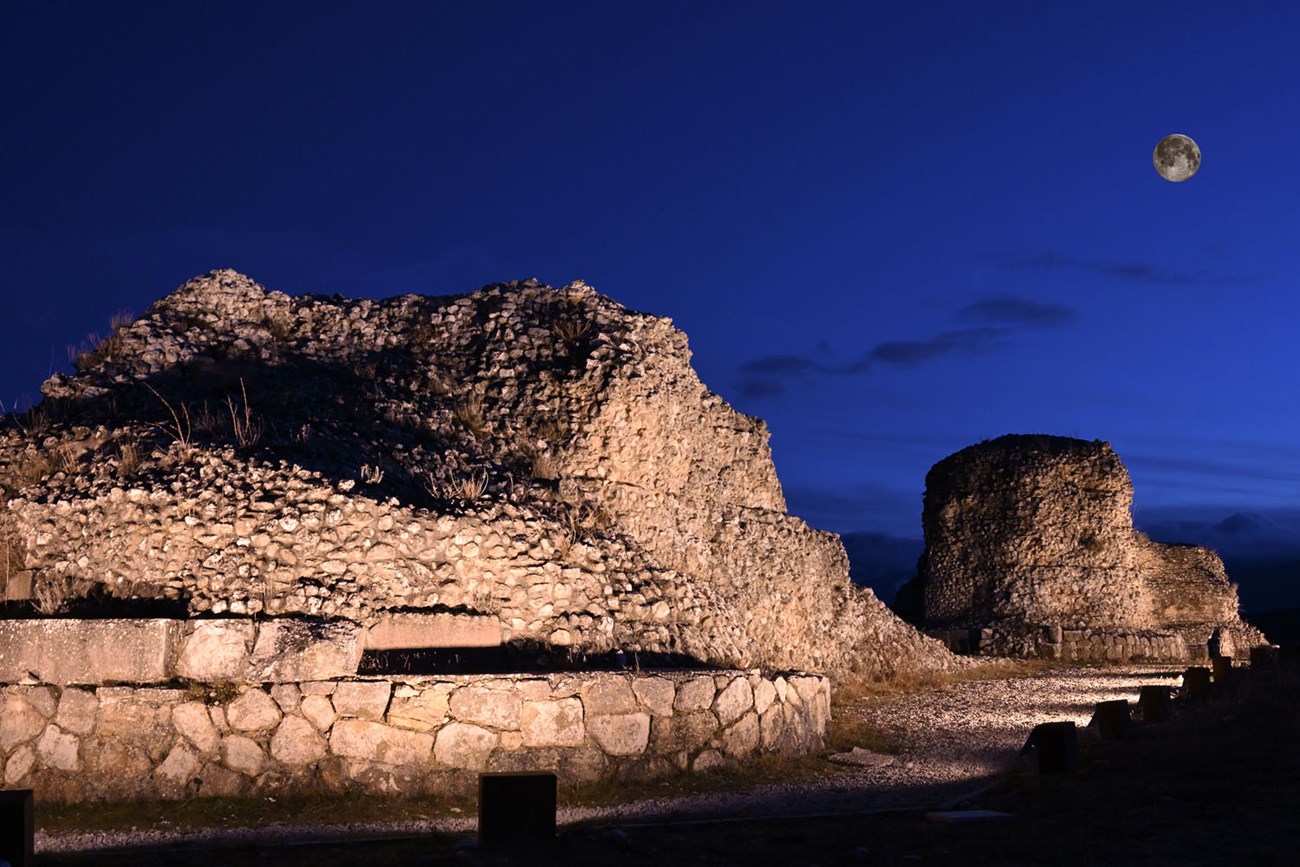The archaeological site of the ancient Roman city of Peltuinum was beautifully illuminated with exciting white light transitions under the talented artistic direction of architect and lighting designer Francesca Storaro
Founded by the Romans in the 1st century B.C., Peltuinum - now part of the municipality of Prata d'Ansidonia, in Central Italy - played a strategic role in controlling commercial traffic linked to transhumance routes. At the turn of the 1st century A.D., the urban area of Peltuinum was expanded through the construction of a city wall and a monumental area involving a temple, overlooking a large forensic area, and a theatre, testifying to the city's cultural liveliness.
Built along the edge of the plateau that bordered the urban area, the walls of Peltuinum, built with locally sourced material, stretched around the town following the irregular course of the terrain. In the 5th century A.D., a strong earthquake struck the city, causing its gradual abandonment and subsequent despoliation. Only 500 metres of the original city walls, from the west gate to the north side of the ancient fortification, have survived to the present day, testifying to the greatness of Roman civilisation in this area. Outside the fortifications, along the street that entered the city, a monumental sepulchre is visible, the current remains of which consist only of the concrete core.
Location
Prata d'Ansidonia, Italy
Lighting design
Arch. Francesca Storaro
Product specification and installation
Enel Green Power Italia
Product supply
Enrico Bergamotto Srl
Pictures
Francesca Storaro, Rino Malgrande, Raffaele Vincelli

